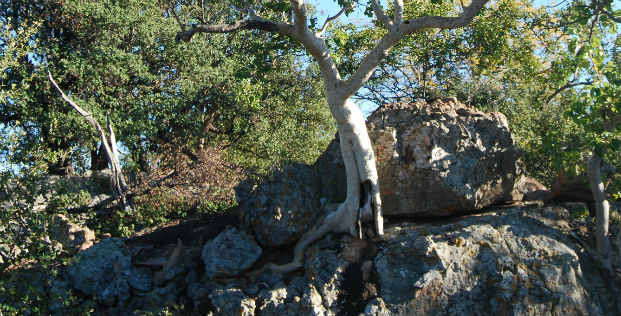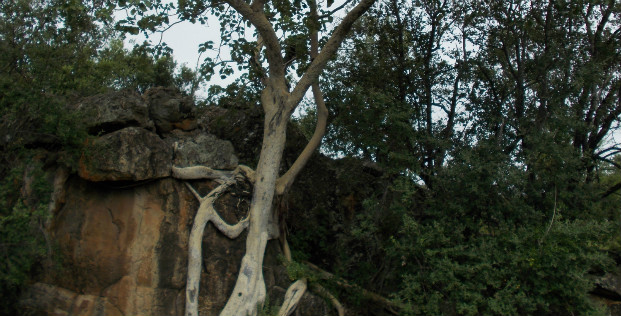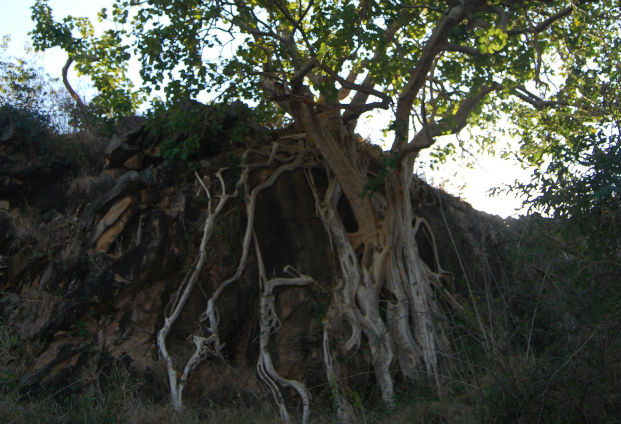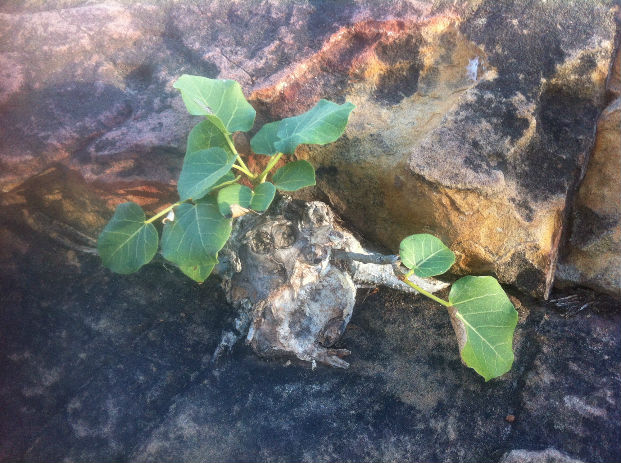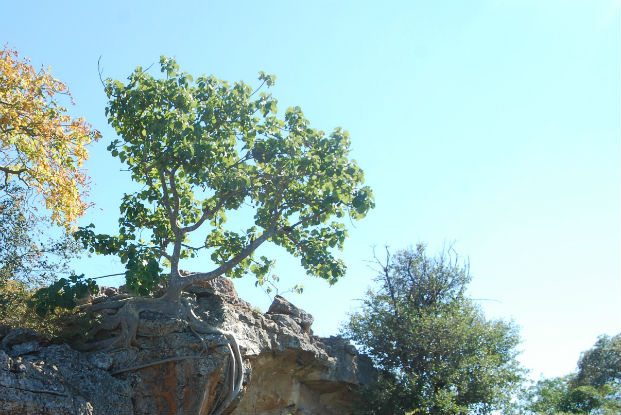Vote for the fact you find most fascinating
The roots of the large-leaved rock fig can reach depths of 60m as they snake their way through cracks in the rocks to access nutrients from the water and soil below.
Until the roots of a large-leaved rock fig have found a source of nutrition it will experience very little growth other than in its roots. However, once the tree finds such a source its growth is accelerated.
Traditionally men will take a decoction of the large-leaved rock fig bark as a strengthening tonic.
At 15 x 20 cm the large-leaved rock fig has the largest leaves of all fig trees.
The milky white latex of the large-leaved rock fig is used as a traditional remedy for skin warts.
The large-leaved rock fig is known as a rock splitter due to its roots expanding in small cracks creating pressure which actually causes the rock to split.
Two wasp species (Elisabethiella comptoni and Nigeriella fusciceps) are known to be pollinators of the large-leaved rock fig. They enter the fig through a tiny hole at the top, once in they will pollinate the flowers as they lay their eggs.



